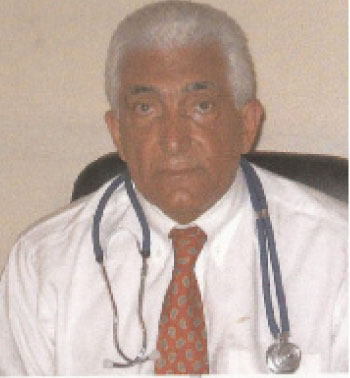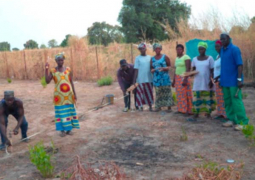
World Cancer Day is a global observance that helps raise people’s awareness of cancer and how to prevent, detect or treat it. This event is held on February 4 each year.
What do people do?
People, businesses, governments and non-profit organizations work together on World Cancer Day to help the general public learn more about the different types of cancer, how to watch for it, treatments and preventative measures. Various activities and events include:
- Television, radio, online and newspaper advertisements and articles that focus on the fight against cancer.
- Nationwide campaigns targeted at parents to help them minimize the risk of cancer within their families.
- Breakfasts, luncheons or dinners aimed at raising funds for cancer research or projects that help to fight cancer. Many of these events feature keynote speakers or video presentations.
- Public information booths featuring information kits, fact sheets, booklets, posters and other items that promote the cancer awareness, prevention, risk reduction, and treatment.
Some countries use World Cancer Day to promote campaigns on various cancer issues, such as breast cancer, lung cancer, skin cancer, and cancer in children. Much focus goes towards awareness and risk reduction.
The World Health Organization (WHO), which is the United Nations’ (UN) directing and coordinating health authority, works with organizations such as the International Union Against Cancer (UICC) on this day to promote ways to ease the global burden of cancer. Recurring themes over the years focus on preventing cancer and raising the quality of life for cancer patients.
Key facts
· Cancers figure among the leading causes of death worldwide, accounting for 8.2 million deaths in 2012 (1).
· Lung, liver, stomach, correctional and breast cancers cause the most cancer deaths each year.
· The most frequent types of cancer differ between men and women.
· About 30% of cancer deaths are due to the five leading behavioral and dietary risks: high body mass index, low fruit and vegetable intake, lack of physical activity, tobacco use, alcohol use.
· Tobacco use is the most important risk factor for cancer causing over 20% of global cancer deaths and about 70% of global lung cancer deaths.
· Cancer causing viral infections such as HBV/HCV and HPV are responsible for up to 20% of cancer deaths in low- and middle-income countries.
· More than 60% of world’s total new annual cases occur in Africa, Asia and Central and South America. These regions account for 70% of the world’s cancer deaths (1).
· It is expected that annual cancer cases will rise from 14 million in 2012 to 22 within the next two decades.
Cancer is a generic term for a large group of diseases that can affect any part of the body. Other terms used are malignant tumorous and neoplasm. One defining feature of cancer is the rapid creation of abnormal cells that grow beyond their usual boundaries, and which can then invade adjoining parts of the body and spread to other organs. This process is referred to as metastasis. Metastases are the major cause of death from cancer.
The problem
Cancer is a leading cause of death worldwide, accounting for 8.2 million deaths in 2012 (1). The main types of cancer are:
· lung (1.59 million deaths)
· liver (745 000 deaths)
· stomach (723 000 deaths)
· colorectal (694 000 deaths)
· breast (521 000 deaths)
· Oesophageal cancer (400 000 deaths) (1).
What causes cancer?
Cancer arises from one single cell. The transformation from a normal cell into a tumour cell is a multistage process, typically a progression from a per-cancerous lesion to malignant tumours. These changes are the result of the interaction between a person’s genetic factors and three categories of external agents, including:
· physical carcinogens, such as ultraviolet and ionizing radiation;
· chemical carcinogens, such as asbestos, components of tobacco smoke, aflatoxin (a food contaminant) and arsenic (a drinking water contaminant); and
· biological carcinogens, such as infections from certain viruses, bacteria or parasites.
WHO, through its cancer research agency, International Agency for Research on Cancer, maintains a classification of cancer causing agents.
Ageing is another fundamental factor for the development of cancer. The incidence of cancer rises dramatically with age, most likely due to a build up of risks for specific cancers that increase with age. The overall risk accumulation is combined with the tendency for cellular repair mechanisms to be less effective as a person grows older.
Risk factors for cancers
Tobacco use, alcohol use, unhealthy diet and physical inactivity are the main cancer risk factors worldwide. Chronic infections from hepatitis B (HBV), hepatitis C virus (HCV) and some types of Human Papilloma Virus (HPV) are leading risk factors for cancer in low- and middle-income countries. Cervical cancer, which is caused by HPV, is a leading cause of cancer death among women in low-income countries.
How can the burden of cancer be reduced?
Knowledge about the causes of cancer, and interventions to prevent and manage the disease is extensive. Cancer can be reduced and controlled by implementing evidence-based strategies for cancer prevention, early detection of cancer and management of patients with cancer. Many cancers have a high chance of cure if detected early and treated adequately.
Modifying and avoiding risk factors
More than 30% of cancer deaths could be prevented by modifying or avoiding key risk factors, including:
· tobacco use
· being overweight or obese
· unhealthy diet with low fruit and vegetable intake
· lack of physical activity
· alcohol use
· sexually transmitted HPV-infection
· urban air pollution
· indoor smoke from household use of solid fuels.
Tobacco use is the single most important risk factor for cancer causing about 22% of global cancer deaths and about 71% of global lung cancer deaths. In many low-income countries, up to 20% of cancer deaths are due to infection by HBV and HPV.
Prevention strategies
· Increase avoidance of the risk factors listed above.
· Vaccinate against human papilloma virus (HPV) and hepatitis B virus (HBV).
· Control occupational hazards.
· Reduce exposure to sunlight.
Early detection
Cancer mortality can be reduced if cases are detected and treated early. There are two components of early detection efforts:
Early diagnosis
The awareness of early signs and symptoms (for cancer types such as cervical, breast colorectal and oral) in order to get them diagnosed and treated early before the disease becomes advanced.
Early diagnosis programmes are particularly relevant in low-resource settings where the majority of patients are diagnosed in very late stages and where there is no screening.
Screening
Screening is defined as the systematic application of a test in an asymptomatic population. It aims to identify individuals with abnormalities suggestive of a specific cancer or pre-cancer and refer them promptly for diagnosis and treatment. Screening programmes are especially effective for frequent cancer types for which a cost-effective, affordable, acceptable and accessible screening test is available to the majority of the population at risk.
Examples of screening methods are:
· visual inspection with acetic acid (VIA) for cervical cancer in low-resource settings;
· PAP test for cervical cancer in middle- and high-income settings;
· mammography screening for breast cancer in high-income settings.
Treatment
Cancer treatment requires a careful selection of one or more intervention, such as surgery, radiotherapy, and chemotherapy. The goal is to cure the disease or considerably prolong life while improving the patient’s quality of life. Cancer diagnosis and treatment is complemented by psychological support.
Treatment of early detectable cancers
Some of the most common cancer types, such as breast cancer, cervical cancer, oral cancer and colorectal cancer have higher cure rates when detected early and treated according to best practices.
Treatment of other cancers with potential for cure
Some cancer types, even though disseminated, such as leukemias and lymphomas in children, and testicular semiformal, have high cure rates if appropriate treatment is provided.
Palliative care
Palliative care is treatment to relieve, rather than cure, symptoms caused by cancer. Palliative care can help people live more comfortably; it is an urgent humanitarian need for people worldwide with cancer and other chronic fatal diseases. It is particularly needed in places with a high proportion of patients in advanced stages where there is little chance of cure.
Relief from physical, psychosocial and spiritual problems can be achieved in over 90% of advanced cancer patients through palliative care.
WHO response
In 2013, WHO launched the Global Action Plan for the Prevention and Control of No communicable Diseases 2013-2030 that aims to reduce by 25% premature mortality from cancer, cardiovascular diseases, diabetes and chronic respiratory diseases.
WHO and the International Agency for Research on Cancer (IARC), the specialized cancer research agency of WHO, collaborate with other United Nations organizations and partners to:
· increase political commitment for cancer prevention and control;
· coordinate and conduct research on the causes of human cancer and the mechanisms of carcinogenesis;
· develop scientific strategies for cancer prevention and control;
· generate new knowledge, and disseminate existing knowledge to facilitate the delivery of evidence-based approaches to cancer control;
· develop standards and tools to guide the planning and implementation of interventions for prevention, early detection, treatment and care;
· facilitate broad networks of cancer control partners and experts at global, regional and national levels;
· strengthen health systems at national and local levels to deliver cure and care for cancer patients; and
· provide technical assistance for rapid, effective transfer of best practice interventions to developing countries.
Background
Cancer is a leading cause of death around the world, according to WHO, which estimates that 84 million people will die of cancer between 2005 and 2015 without intervention. Low-income and medium-income countries are harder hit by cancer than the high-resource countries. It is essential to address the world’s growing cancer burden and to work on effective control measures.
World Cancer Day is part of the World Cancer Campaign, which responds to the Charter of Paris adopted at the World Summit Against Cancer for the New Millennium on February 4, 2000. It called for a strong alliance between researchers, health-care professionals, patients, governments, industry partners and the media to fight cancer.
The Charter of Paris designated February 4 each year as World Cancer Day. UICC is responsible for coordinating World Cancer Day globally. It receives support from various partners and organizations, including the World Health Organization, the International Atomic Energy Agency, and other international bodies. UICC organized the first World Cancer Day in 2006.
Symbols
There are different symbols that are used to help promote the fight against different types of cancers. For example, the pink ribbon is a global symbol of breast cancer awareness, while the orange ribbon is associated with child cancer awareness. Another example is the daffodil, which the American Cancer Society sees as a symbol of hope that people share for a future where cancer is no longer a life-threatening disease.
For further information e mail azadehhassan@yahoo.co.uk, Text to 002207774469 / 3774469, or call on DR Azadeh Health live program at the AFRI-RADIO every Wed. from 9-9.30 am
Author DR H. AZADEH Senior Lecturer at the University of the Gambia W. Africa, Senior Consultant in Obstetrics & Gynaecology.


__FillWzI1NSwxODBd.jpg)


